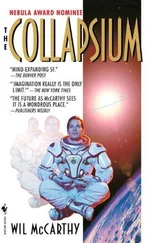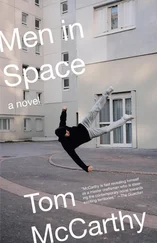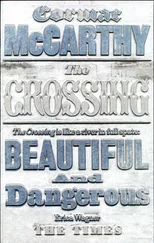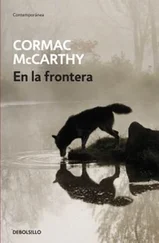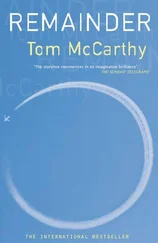Sophie’s so advanced in natural science that Mr. Clair makes no pretence of knowing anything she doesn’t, or even half of what she does. When the three of them collect pollen samples from around the Crypt Park or Mosaic Garden, Sophie whisks the jars off to her “lab,” the smaller stable workshop (ceiling-beams stained by a burn-mark that the years have faded but not wiped away) she’s now made her own and from which Serge is more or less excluded, and emerges two days later with drawings of magnified slides and diagrams showing varying rates of cross-pollination which she’s correlated with her analysis of the constituent mixture of this season’s honey. It is she, not Clair, who leads the trio on walks through Bodner’s Kitchen Garden. While the mute servant trundles around shunting wheelbarrows of dead stems to the compost corner, she reels off the names of plants:
“Portal Ruby, Jonker Van Tet, Symphony, Haphill, Royal Sovereign…”
“A tautologism,” Mr. Clair says. “All sovereigns are royal.”
“This one is Boskoop Giant,” Sophie continues. “And this, blackcurrant Ben Sarek.”
“And most of them are illegitimate.”
“Cherries: Stella, Morello. Pear: Doyenne du Comice. And here are apples: Charles Ross, Lord Lambourne, King of Pippin…”
“A cavalier named all our fruits. Come the new Commonwealth we’ll name them after tradesmen: cobblers, bakers-”
“Shh!” hisses Sophie. “Look.” She juts her finger at a stalk two or three inches from the ground, where a small spider clings almost vertically to its web. “A walnut orb-weaver,” she tells them. “And this,” she says, pointing at a tiny dark thing navigating its way over clumps of earth below the spider’s eyrie, “is a bloody-nosed beetle. It dribbles bright red fluid from its mouth…”
Behind them, a fountain more than dribbles as its centrepiece, a wrought-iron swan, gurgles and vomits as though it had over-gorged itself on the garden’s aristocratic fruit. Sophie leads them round this, towards the lilies. As they pass the enormous poppy bed she exchanges finger-signs with Bodner, who’s half-lost among the swollen, bulbous heads.
“Don’t ever let your father catch you doing that,” Clair warns her.
Sophie shrugs. “These lilies,” she continues lecturing them as they arrive beside swathes of deep maroon, “are Sun Gods. Here-” she digs her hand into the ground to scoop and scrape earth away from the bulb-“is the basal plate, this round pyramid thing. At the top, the flowers: three outer sepals and three inner petals.” As her fingers gently separate the flower-parts, Serge gazes at the earth wedged beneath their nails, stark half-moon hemispheres of dark against pale white. “Six anthers and a three-lobed stigma.” She caresses the stamen, running her fingers right up to the end where white pistils stick out like antennae. “These ones are seventh generation, from a single parent flower.”
“They can’t be from just one flower,” Clair says. “You need two to make baby flowers.”
“Not with lilies,” Sophie corrects him. “They can fertilise themselves. And then their offspring fertilise each other.”
“Endogamy,” tuts Clair. “Perversion of royal houses.”
“What’s mahogany?” asks Serge.
“You’re as bad as Mama,” Sophie tells him.
“No I’m not!” he snaps back. She flicks small flecks of earth at him.
“I think this conversation has gone far enough,” says Mr. Clair. “Back to the classroom.”
Their tutor’s not averse to games. He even schedules in a “ludic session” every week. Excitedly unwrapping a parcel which arrives from London via Lydium several months into his tenure, he presents to them the Realtor’s Game, in which contestants must move object-avatars (a car, a ship, a dog) round squares which represent the city of Chicago, amassing wealth and influence as they progress.
“R.R.: I own that. Fare, one hundred dollars!” Sophie gleefully announces as Serge’s near-destitute mutt pitches on her territory. She has a knack of snapping up prime squares, leaving Serge to mop up dregs of real estate: Rickety Row, Shab Street and the like-although he’s always keen to buy the Ting-a-Ling Telephone Company, despite its poor yield, sold on visions of humming wires and buzzing switchboards, of connections.
“Public transport should be gratis,” Clair announces as he lends Serge the hundred. “And that loan is interest free: I don’t need a pound of dog-flesh thrown into the bargain. I hope this game adequately impresses upon you the iniquities of capital.”
It doesn’t: they both love it. They play extra rounds during free sessions and at weekends. One warm early-summer morning they decide to play outside, but, finding the board won’t sit flat on the Mulberry Lawn’s grass and being so familiar with the layout of the grid that its actual presence before them has become unnecessary, they assign one of the estate’s landmarks to each of its squares-Crypt Park’s second bench for George Street, beehives for Soakum Lighting System and so on-and conduct their game by moving physically from one spot to another. To determine the number of places to advance on any go, they throw a handful of sycamore leaves up in the air and see how many fall within the circumference of a skipping-rope laid on the grass around the thrower’s body. As the outdoor version takes over from the original, additions creep into the rules, modifications: if two players find themselves in the Maze Garden at the same time, one may challenge the other to a “rolling duel” in which two tennis balls are rolled by hand along the maze path, the goal of each roller being to knock the other’s ball out of the maze, the winner subsequently commandeering from the loser a property of his or her (usually her) choice; or if a player finds him- or herself short of rent when lodged beside the beehives, he or she (usually he) may place his hand against a hive and hold it there, braving stings, for half a minute in lieu of making payment-a full minute if the rent’s above five hundred dollars. At first, games advance slowly as both players have to travel to their opponent’s game-location on each move, to check that the other doesn’t cheat when counting sycamore-leaf numbers. After a while, though, Serge has the idea of expanding the Ting-a-Ling Telephone Company out into real space, and they rig up, with the help of poles that feed them over garden walls and around hedges, a primitive web of strings and soup-can mouth- and earpieces through which they can communicate their positions and report the outcomes of each sycamore-throw, for some reason trusting each other to tell the truth when being overheard live. The network can’t cover the whole estate; they have to come to speaking-listening hubs that, in reality, are close enough to one another that they could simply shout. So as not to blow the fantasy of telecommunication, they conduct their business in hushed voices, almost whispers. After a few days they’re spending whole sessions not trudging from spot to spot but rather sitting at their tele-posts, quietly agreeing their positions and negotiating sub-clauses for each now-imaginary move…
The attic draws them back again and again. On rainy days they go to play the estate-wide version of The Realtor’s Game at its window, shunting their imaginary doubles from park to garden, avenue to path to lawn. While doing this, they fiddle with their father’s archive. He has stacks of old recordings: lamp-blackened glass phonautograph plates and rolls of paper bearing scratch marks laid down by voices moaning from deaf bodies before either of them was born; zinc master discs that, cut in the final years of the last century and the first few of this, appear to Serge like coins of some exotic currency gone out of circulation-miniature, round islands of arrested time. The surfaces of the zinc discs give off a faint smell of beeswax-beeswax overlaid with some sharp chemical. (“Chromic acid,” Sophie tells him when she sees him wrinkling his nose at one. “I’ve got a whole phial of it in my lab.”) The cylinders they find beside these are formed entirely of wax: solid brown columns of the stuff whose smooth, moulded surfaces have been defaced by networks of engravings-strange, meshed graffiti. Sophie and Serge can play these back, thanks to an old Edison phonograph they find gathering dust among them. Selecting recordings at random (some are in labeled cardboard tubes, others are loose and unmarked), they slide the cylinder onto its mandrel and wait for the sound to trickle out. Most of the cylinders contain sequences of letters, spoken out aloud, repeatedly:
Читать дальше

